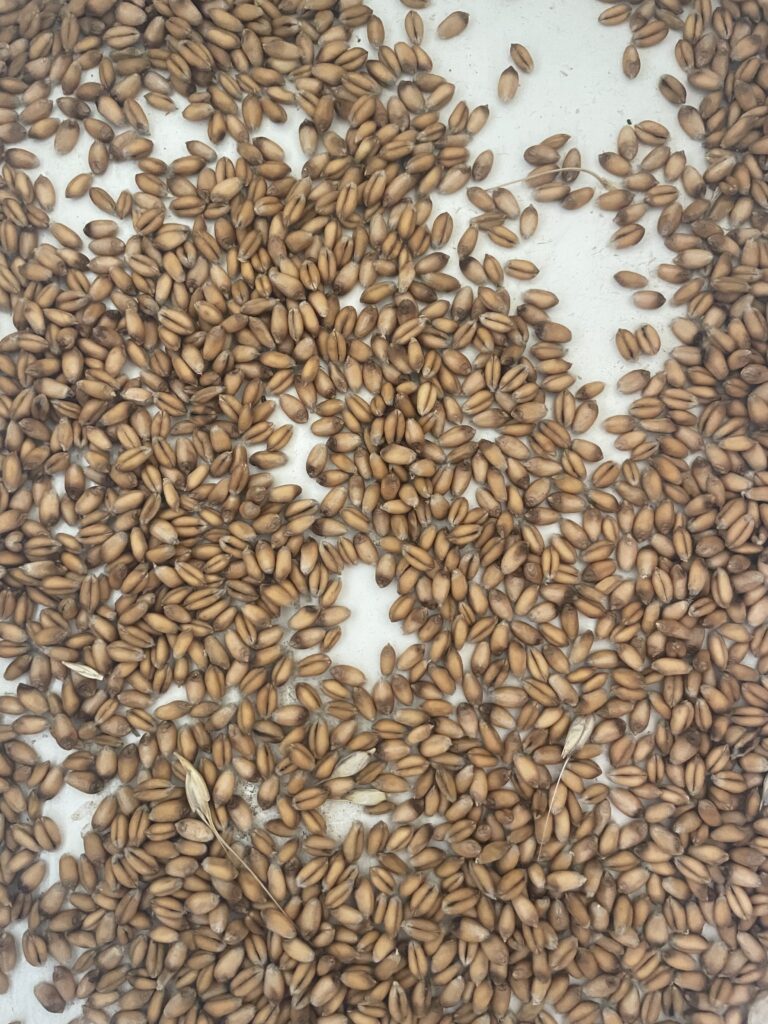Summary
Winter wheat is most susceptible to black point during grain fill and ripening. Black point does not cause yield loss but can reduce grain quality.
Identification
Symptoms of black point become noticeable as wheat matures and tissue begins to die. Fields will appear to have a black-like discolouration with symptoms being observed on the seed after harvest. In particular, kernels will have black discolouration usually on the embryo (germ) end (Figure 1). This discolouration then results in wheat being downgraded because the black point infected kernels will cause the flour to turn grey during the milling process, making it undesirable to end users.

Production Insurance may compensate affected winter wheat growers by applying a quality factor to low-grade wheat yields to reflect the lower prices received for these crops. The following link shows an example of how the coverage works. Production Insurance customers who experience winter wheat quality downgrades should contact Agricorp.
Biology
Black point can be caused by several pathogens including Alternaria spp., Cochliobolus sativus, Cladosporium spp., and others. It does not produce spores and will continue to grow on living tissue.
Black point is particularly challenging during wet, warm weather during the grain fill period. It can also be prevalent in hot and dry weather. Harvest delays can also favour disease.
Best Management Practices
Timely Harvest
The best defense against Black Point is to harvest wheat as quickly as possible once it reaches maturity. Harvesting early and drying your grain can reduce Black Point progression.
Fungicides
A foliar fungicide at the T3 timing may help reduce infection while fungicide seed treatments may improve germination and reduce seedling infection, but efficacy is inconsistent.